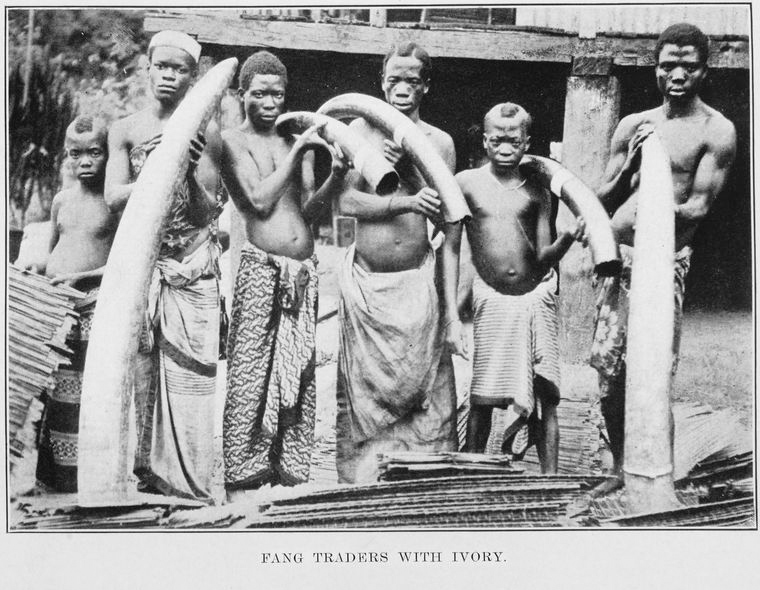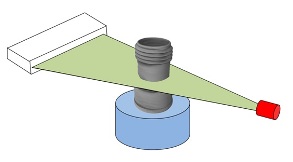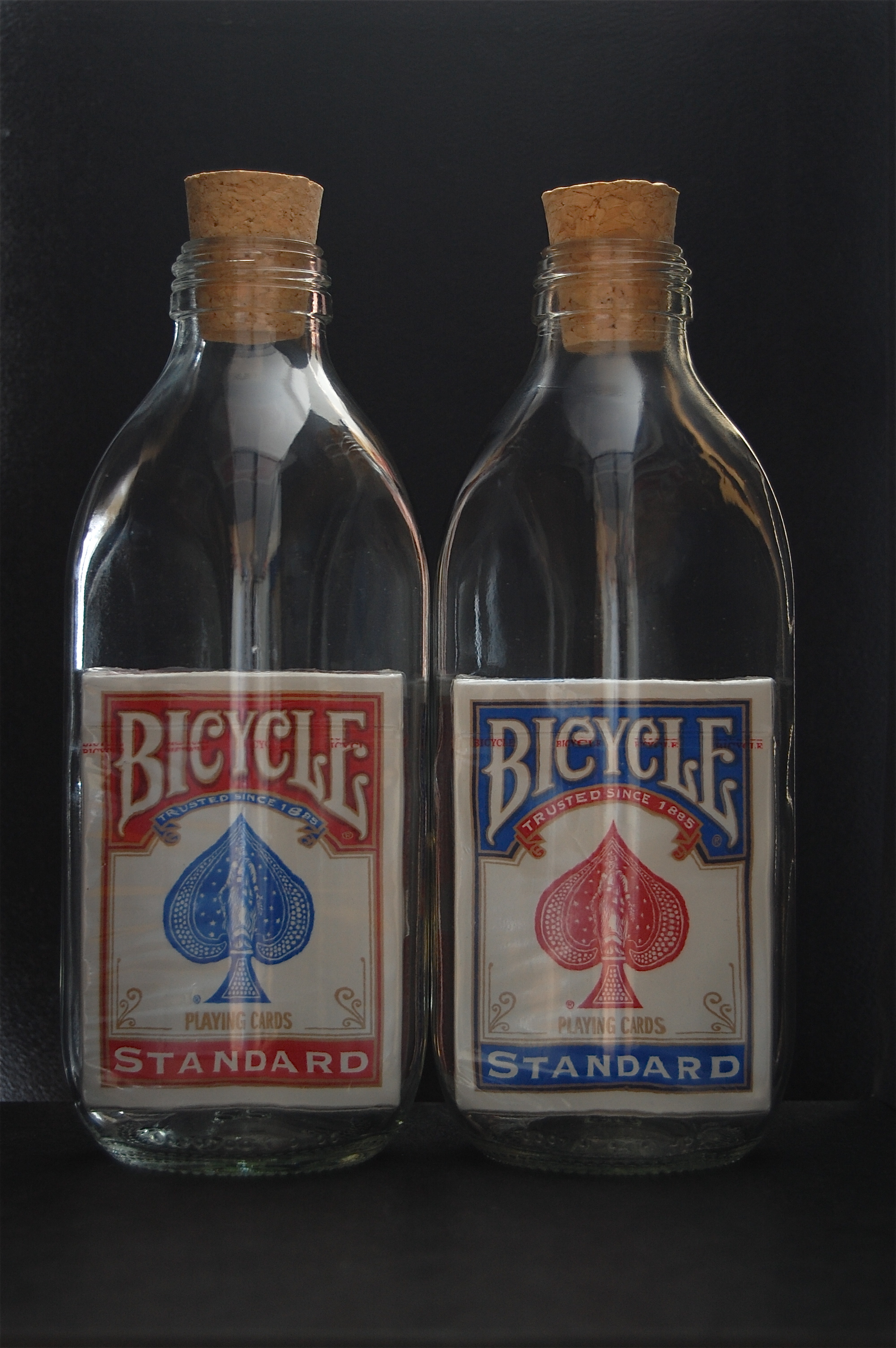|
Chinese Puzzle Ball
A Chinese puzzle ball, sometimes known as a devil's work ball ( zh, s=鬼工球, p=guǐ gōng qiú), is a Chinese-made artifact that consists of a number of intricately carved concentric hollow spheres carved from a single solid block that fit within one another in a way that looks impossible. They were traditionally made of ivory. Following the international ban on the ivory trade, manufacturers of puzzle balls have tried using other materials, including bone. They are made from a single solid ball with conical holes drilled in it, with the carver separating the different spherical shells using L-shaped tools. 3D imaging using computational tomography has been used to identify details of the manufacturing process. See also * Ivory carving * Impossible bottle An impossible bottle is a bottle containing an object that does not appear to fit through the bottle's mouth. The ship in a bottle is a traditional and the most iconic type of impossible bottle. Other common obje ... [...More Info...] [...Related Items...] OR: [Wikipedia] [Google] [Baidu] |
Ivory
Ivory is a hard, white material from the tusks (traditionally from elephants) and teeth of animals, that consists mainly of dentine, one of the physical structures of teeth and tusks. The chemical structure of the teeth and tusks of mammals is the same, regardless of the species of origin, but ivory contains structures of mineralised collagen. The trade in certain teeth and tusks other than elephant is well established and widespread; therefore, "ivory" can correctly be used to describe any mammalian teeth or tusks of commercial interest which are large enough to be carved or scrimshawed. Besides natural ivory, ivory can also be produced synthetically, hence (unlike natural ivory) not requiring the retrieval of the material from animals. Tagua nuts can also be carved like ivory. The trade of finished goods of ivory products has its origins in the Indus Valley. Ivory is a main product that is seen in abundance and was used for trading in Harappan civilization. Finished ivory pr ... [...More Info...] [...Related Items...] OR: [Wikipedia] [Google] [Baidu] |
Ivory Trade
The ivory trade is the commercial, often illegal trade in the ivory tusks of the hippopotamus, walrus, narwhal, mammoth, and most commonly, African and Asian elephants. Ivory has been traded for hundreds of years by people in Africa and Asia, resulting in restrictions and bans. Ivory was formerly used to make piano keys and other decorative items because of the white color it presents when processed but the piano industry abandoned ivory as a key covering material in the 1980s in favor of other materials such as plastic. Also, synthetic ivory has been developed which can be used as an alternative material for making piano keys. Elephant ivory Elephant ivory has been exported from Africa and Asia for millennia with records going back to the 14th century BCE. Transport of the heavy commodity was always difficult, and with the establishment of the early-modern slave trades from East and West Africa, freshly captured slaves were used to carry the heavy tusks to the ports where ... [...More Info...] [...Related Items...] OR: [Wikipedia] [Google] [Baidu] |
Industrial Computed Tomography
Industrial computed tomography (CT) scanning is any computer-aided tomographic process, usually X-ray computed tomography, that uses irradiation to produce three-dimensional internal and external representations of a scanned object. Industrial CT scanning has been used in many areas of industry for internal inspection of components. Some of the key uses for industrial CT scanning have been flaw detection, failure analysis, metrology, assembly analysis and reverse engineering applications. Just as in medical imaging, industrial imaging includes both nontomographic radiography (industrial radiography) and computed tomographic radiography (computed tomography). Types of scanners ''Line beam scanning'' is the traditional process of industrial CT scanning.Hofmann, J., Flisch, A., Obrist, A., Adaptive CT scanning-mesh based optimisation methods for industrial X-ray computer tomography applications. NDT&E International (37), 2004, pp. 271–278. X-rays are produced and the beam is coll ... [...More Info...] [...Related Items...] OR: [Wikipedia] [Google] [Baidu] |
Ivory Carving
Ivory carving is the carving of ivory, that is to say animal tooth or tusk, generally by using sharp cutting tools, either mechanically or manually. Objects carved in ivory are often called "ivories". Humans have ornamentally carved ivory since prehistoric times, though until the 19th-century opening-up of the interior of Africa, it was usually a rare and expensive material used for small luxury products. Very fine detail can be achieved, and as the material, unlike precious metals, has no bullion value and usually cannot easily be recycled, the survival rate for ivory pieces is much higher than for those in other materials. Ivory carving has a special importance to the medieval art of Europe because of this, and in particular for Byzantine art as so little monumental sculpture was produced or has survived. As the elephant and other ivory-producing species have become endangered species, endangered, largely because of hunting for ivory, CITES and national legislation in most co ... [...More Info...] [...Related Items...] OR: [Wikipedia] [Google] [Baidu] |
Impossible Bottle
An impossible bottle is a bottle containing an object that does not appear to fit through the bottle's mouth. The ship in a bottle is a traditional and the most iconic type of impossible bottle. Other common objects include fruits, matchboxes, decks of cards, tennis balls, racketballs, Rubik's Cubes, padlocks, knots, and scissors. These may be placed inside the bottle using various mechanisms, including constructing an object inside the bottle from smaller parts, using a small object that expands or grows inside the bottle, or molding the glass around the object. Ship in a bottle There are two ways to place a model ship inside a bottle. The simpler way is to rig the masts of the ship and raise it up when the ship is inside the bottle. Masts, spars, and sails are built separately and then attached to the hull of the ship with strings and hinges so the masts can lie flat against the deck. The ship is then placed inside the bottle and the masts are pulled up using the strings ... [...More Info...] [...Related Items...] OR: [Wikipedia] [Google] [Baidu] |
Carving
Carving is the act of using tools to shape something from a material by scraping away portions of that material. The technique can be applied to any material that is solid enough to hold a form even when pieces have been removed from it, and yet soft enough for portions to be scraped away with available tools. Carving, as a means for making stone or wooden sculpture, is distinct from methods using soft and malleable materials like clay, fruit, and melted glass, which may be shaped into the desired forms while soft and then harden into that form. Carving tends to require much more work than methods using malleable materials.Daniel Marcus Mendelowitz, ''Children Are Artists: An Introduction to Children's Art for Teachers and Parents'' (1953), p. 136. Kinds of carving include: * Bone carving * Chip carving * Fruit carving * Gourd carving or gourd art * Ice carving or ice sculpture * Ivory carving * Stone carving ** Petroglyph * Vegetable carving ** Thaeng yuak (Banana stalk ca ... [...More Info...] [...Related Items...] OR: [Wikipedia] [Google] [Baidu] |
Chinese Sculpture
Chinese art is visual art that originated in or is practiced in China, Greater China or by Chinese artists. Art created by Chinese residing outside of China can also be considered a part of Chinese art when it is based in or draws on Chinese culture, heritage, and history. Early "Stone Age art" dates back to 10,000 BC, mostly consisting of simple pottery and sculptures. After that period, Chinese art, like Chinese history, was typically classified by the succession of ruling dynasties of Chinese emperors, most of which lasted several hundred years. The Palace Museum in Beijing and the National Palace Museum in Taipei contains extensive collections of Chinese art. Chinese art is marked by an unusual degree of continuity within, and consciousness of, tradition, lacking an equivalent to the Western collapse and gradual recovery of Western classical styles of art. Decorative arts are extremely important in Chinese art, and much of the finest work was produced in large workshops ... [...More Info...] [...Related Items...] OR: [Wikipedia] [Google] [Baidu] |
Spheres
The Synchronized Position Hold Engage and Reorient Experimental Satellite (SPHERES) are a series of miniaturized satellites developed by MIT's Space Systems Laboratory for NASA and US Military, to be used as a low-risk, extensible test bed for the development of metrology, formation flight, rendezvous, docking and autonomy algorithms that are critical for future space missions that use distributed spacecraft architecture, such as Terrestrial Planet Finder and Orbital Express. Each SPHERES satellite is an 18-sided polyhedron, with a mass of about 4.1 kg and a diameter of about 21 cm. They can be used in the International Space Station as well as in ground-based laboratories, but not in the vacuum of space. The battery-powered, self-contained units can operate semi-autonomously, using CO2-based cold-gas thrusters for movement and a series of ultrasonic beacons for orientation. The satellites can communicate with each other and with a control station wirelessly. The built-i ... [...More Info...] [...Related Items...] OR: [Wikipedia] [Google] [Baidu] |







